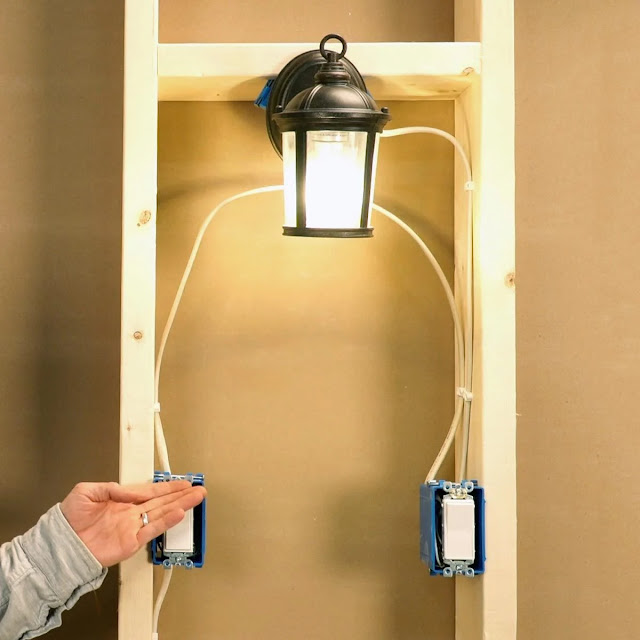Three-way light switches are commonly used in homes to
control a single light fixture or set of fixtures from two different locations,
such as at the top and bottom of a staircase or at either end of a long
hallway. They allow you to turn the light on or off from either switch,
regardless of the position of the other switch. If you're not comfortable with working on electrical, speak with local electricians in Magnolia, TX.
Here's how they work:
1. **Three Switches:** A three-way lighting setup involves
three switches: two three-way switches and one light switch. Let's call the
switches A, B, and C.
2. **Connection:** The electrical connection involves a
circuit between the light fixture and the switches. The hot wire from the power
source connects to one of the switches (let's say A), while the other switch
(C) is connected to the light fixture.
3. **Traveler Wires:** Inside the wall, there are three
wires: two traveler wires (usually red and black) and one common wire (usually
white). These traveler wires connect the two three-way switches together.
4. **Switch Operation:** When either of the three-way
switches (A or B) is flipped, it changes the state of the circuit. If the light
is off and you flip one of the switches, the circuit completes, and the light
turns on. If you flip either switch again, the circuit is broken, and the light
turns off.
5. **Toggle Logic:** The switches don't have an
"on" or "off" position like single-pole switches do.
Instead, they have two toggle positions. The position of the toggles doesn't
indicate whether the light is on or off, but rather which switch controls the
circuit.
6. **Coordinated Operation:** The switches work together so
that flipping either one will toggle the state of the light. For instance, if
switch A is in the "up" position and switch B is in the
"down" position, flipping either switch will turn the light off if
it's currently on, or on if it's currently off. If you're unfamiliar with electrical, speak with a licensed electrician
In summary, three-way switches allow for flexible control of lighting from multiple locations by creating a circuit where the light can be turned on or off regardless of the position of the other switch. This is achieved through the use of traveler wires and coordinated switch operation.
1. **Staircases:** Three-way switches are often used at the
top and bottom of staircases to control the lighting. This allows you to turn
the lights on or off from either end of the staircase.
2. **Hallways:** In long hallways or corridors, it's
practical to have switches at either end so you can control the lighting as you
enter or exit the space.
3. **Large Rooms:** Rooms with multiple entrances or where
the layout requires flexibility in lighting control benefit from three-way
switches. For example, a living room with entrances from two different sides
might have switches at both entrances.
4. **Master Bedrooms:** In larger master bedrooms with
multiple entrances or with separate lighting zones, three-way switches can
provide convenient control from different areas of the room.
5. **Outdoor Spaces:** In outdoor areas such as patios,
decks, or pathways, three-way switches allow you to control lighting from
different entry points or areas of use.
Overall, three-way light switches offer flexibility and convenience in controlling lighting from multiple locations, making them a practical choice for various areas within a home. The wiring for a three-way switch can be difficult and takes skill. Speak with you Electricians Magnolia TX to ensure safety. Logo Electrical Services is open 24 hours for your convenience.


Comments
Post a Comment